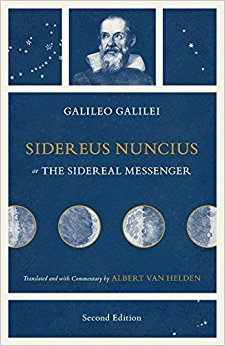Sidereus Nuncius, or the Sidereal Messenger
Galileo Galilei's Sidereus Nuncius is arguably the most dramatic scientific book ever published. It
| 商家名称 |
信用等级 |
购买信息 |
订购本书 |
|
|
 |
Sidereus Nuncius, or the Sidereal Messenger |
 |
|
 |
Sidereus Nuncius, or the Sidereal Messenger |
 |

Galileo Galilei's Sidereus Nuncius is arguably the most dramatic scientific book ever published. It announced new and unexpected phenomena in the heavens, "unheard of through the ages," revealed by a mysterious new instrument. Galileo had ingeniously improved the rudimentary "spyglasses" that appeared in Europe in 1608, and in the autumn of 1609 he pointed his new instrument at the sky, revealing astonishing sights: mountains on the moon, fixed stars invisible to the naked eye, individual stars in the Milky Way, and four moons around the planet Jupiter. These discoveries changed the terms of the debate between geocentric and heliocentric cosmology and helped ensure the eventual acceptance of the Copernican planetary system. Albert Van Helden's beautifully rendered and eminently readable translation is based on the Venice 1610 edition's original Latin text. An introduction, conclusion, and copious notes place the book in its historical and intellectual context, and a new preface, written by Van Helden, highlights recent discoveries in the field, including the detection of a forged copy of Sidereus Nuncius, and new understandings about the political complexities of Galileo's work.
作者简介 Galileo Galilei (1564-1642) was an Italian physicist, mathematician, philosopher, and astronomer. Albert Van Helden is professor emeritus of history at Rice University and the University of Utrecht. He is translator and coeditor of On Sunspots, also available from the University of Chicago Press, and coeditor of The Origins of the Telescope.
网友对Sidereus Nuncius, or the Sidereal Messenger的评论
喜欢Sidereus Nuncius, or the Sidereal Messenger请与您的朋友分享,由于版权原因,读书人网不提供图书下载服务




